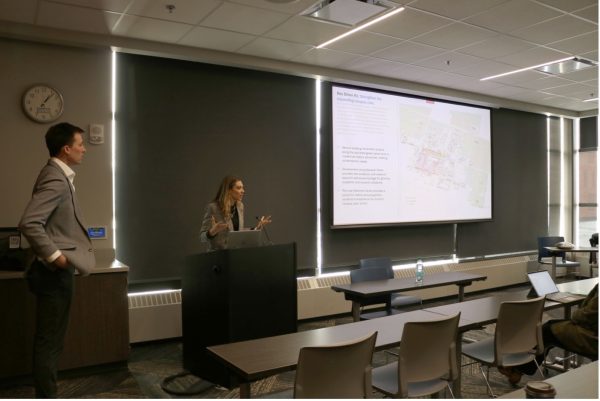Indigenous lands used for land-grant universities
November 4, 2020
South Dakota’s history has deep roots intertwined with the Indigenous peoples in the region. South Dakota State University is no different, having been built on Indigeneous lands.
To understand how the school came to be, one has to first look at the history of Brookings itself. In 1857, pioneer Wilmot Brookings arrived in Sioux Falls and ventured into Yankton. He was elected by the legislative body as the provisional governor of the Dakota Territory, an area that spanned from western Minnesota to the east of the Missouri River.
This claim as provisional governor was unrecognized by the U.S. government until 1861 when Dakota Territory became federally recognized. Brookings then served as a representative of Yankton County in 1861. It was around this same time that the Morrill Act was passed in 1862, which allowed college campuses to be built using proceeds and interest earned off land sales. This provision would help fund the creation of the Dakota School of Agriculture in the city of Brookings in 1881.
Land disputes were arising to the west of the Missouri River between the Sioux and the settlers. This prompted the signing of the Fort Laramie Treaty in 1868, which recognized the Black Hills as belonging to the Great Sioux Reservation and preserved the freedom of the tribes to operate as “undisturbed” by settlers.
The western part of South Dakota was claimed in 1887 by the Dawes Act, which assigned 160,000 acres of land to that area of the state. This undermined the previous treaty of Fort Laramie.
In 1873, a proposal was made for three new towns east of the Missouri River to accommodate a major railroad into South Dakota, which attracted more settlers and prospective business owners. These three towns were Brookings, Volga and Arlington. The first of the three would become the new site for the construction of the college campus we know today.
In 1881, the Dakota School of Agriculture was established in Brookings, which served as a predecessor for SDSU, and benefitted from the land-grant established by Pres. Lincoln. The school would go on to be named South Dakota State College of Agriculture and Mechanic Arts in 1904, and would later be renamed South Dakota State University in 1964. Land-grant status was given to the college in 1889.
The campus has origins on land previously designated to the Yankton Sioux through a treaty between the tribe and the U.S government, a treaty that was undermined in the late 1880s.
The nine tribes that exist today in South Dakota are the Cheyenne River, Crow Creek, Flandreau Santee Sioux, Lower Brule Sioux, Oglala Sioux, Rosebud Sioux, Sisseton Wahpeton Oyate, Standing Rock Sioux and Yankton Sioux Tribes. The U.S. census bureau estimates that 9% of the population of South Dakota identify as Native or American Indian.
In the past decade, SDSU has increased its funding and representation efforts to recognize Indigenous history. One notable measure in accomplishing this has been the Wokini Initiative. The Wokini Initiative strives to utilize the interest earned from it’s land-grant status to help fund scholarships for Indigenous students as well as “a collaborative environment that will benefit everyone and establish priorities between tribal communities, the tribal members and the rest of the state.”
Among other efforts to represent Native American students was the creation of a new American Indian Student Center.
“The center stands for tangible commitments to the American Indian peoples to the state of South Dakota,” Morgan Catlett-Ausborn, American Indian Academic and Success advisor, said. “It creates space that provides cultural representation on campus.”






















